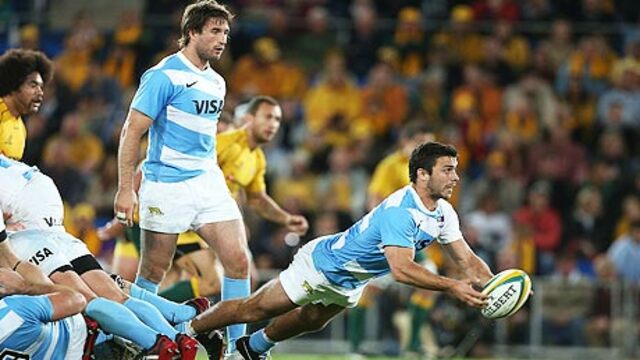The problem for Argentina going into the match against Australia in Perth may be over confidence. The whole country thought they were going to beat the Wallabies in Argentina last year and this seemed to create a complacent attitude in the team. The Pumas have always played better when underdogs, driven by a degree of discomfort. They need an emotional edge to take into the game against the Wallabies this week, and it’d be a mistake to think it will just happen for them on the back of two strong performances against the Boks and All Blacks.
But the reason that even some Aussies are giving Argentina a chance in Perth is the current failings of their team at three major areas of test match rugby.
1. The old scrum laws gave Australia a way out. They could steal or gamble on the hit and hide some of their weakness with the help of permissive refereeing. Taking the hit out has tested the power of the scrum for an elongated period. This has brutally exposed Australia and taken away a big attacking weapon. For Queensland a couple of years back Higginbotham could pick up with Will Genia 6-8 metres off his shoulder running flat and Digby Ioane cutting lines. It was almost impossible to defend against. Without a stable scrum, the brilliance of Genia is diminished. The Wallabies know that the Pumas will come at them in the scrum, but can they cope?
2. The high ball. Traditionally this was an area of great Australian strength with players like Roger Gould and Greg Martin. The culture of Aussie Rules in Australia means that kids have grown up learning how to take high balls. It is part of the national culture. At the moment no one looks interested and an area of strength has become a source of grief. Australia must have known that the Springboks would kick at them, but still they appeared unprepared. This problem has gone on for a couple of years now and is unexpected. Australia sent up a few high balls against South Africa and seemed as poor at chasing their own kicks as they are in fielding the opposition’s. When the All Blacks have Corey Jane back in the team they will have a great chasing option to add to Julian Savea’s and Israel Dagg’s back field skills. And, they will exploit it. But Australia are not taking advantage of Israel Folau’s skills. Defensively and offensively, the high kick is a muddle.
3. South Africa’s blitz defence gave Australia no end of problems. They did not appear ready for it and they were not able to solve it on the hoof. Argentina are also likely to rush up as they have done with some success against the All Blacks, so the Wallabies need a plan. Genia said they were aware of the Springbok rush but there seemed to be little strategy other than the switch of direction, a squash ‘T’ play with runners coming back off the half back. Australia’s skill level let them down, though, and the strategy meant their ball carriers were isolated too often. A second option where they sent runners on a 45 degree angle into the space inside and behind the blitz defender would have been handy. This would have got the attack going forward and opened up some grubber kick opportunities in behind the winger.
At times I felt for Australia against South Africa, particularly for Quade Cooper. I quite like the person and you don’t want to see a huge talent so short of confidence. He doesn’t seem to have the same zip off the mark since he had the knee operation and that may be a part of it. Like Benji Marshall you would have paid to watch Cooper play a couple of years back. Like Australia, Cooper has lost his way, but don’t write them off. The Wallabies have problems, but they could well be firing again by the 2015 World Cup. I hope so, because over the years they have been a team worth watching.


